The Sea Saw Effect
Documentary film-maker Priya Thuvassery’s ‘Coral Woman’ is literally a journey to another realm, one that exists underwater and is yet so intrinsically connected to lives lived and unlived in the world above
Praveena Shivram
At the Chennai International Documentary Festival, where Priya Thuvassery’s Coral Woman was officially screened for the first time, there was one shared moment of such tangibility in the audience that it felt surreal, like the promise of early dawn in a bleak winter sky. It was the end sequence in the film, where Uma Mani, a certified diver and coral conservationist, and the protagonist of the film, holds Priya’s hand underwater as she takes her first dive, and symbolically brings the many layers in this story full circle – that of the underwater coral community, that of the earth-and-water-bound fishing community, that of the harmful industries that surround it, and that of Uma’s almost-quaint journey through it all – that one moment, hand in hand, contained in its gesture a closure and a beginning, of hope transcending its past and a future eager to break the shackles of its present. So I wasn’t surprised when I spoke to Priya and she picked this moment as the one that made the film fall in place for her. ‘The whole story of Uma inspired and overwhelmed me. It reminded me of my mother, who chose a life that was mostly confined to the family and the kitchen. I was curious to discover what about corals inspired Uma to step out of her comfort zone and explore the deep sea. For me, this film was a huge plunge (pun unintended). I was constantly asking myself if I was doing the right thing, if there was a film out there. A one-line story about Uma is also good enough, but I felt a film should be beyond that. So, I decided to go and meet her because all our conversations were happening over the phone and Whatsapp, and I wanted to know if this would work. Initially I stayed with her for two days and then we travelled to Rameshwaram to snorkel. That was the first time for me; I didn’t even know how to swim then! But when I snorkeled, thanks to all the other experts around, I was completely fascinated by the sight of corals. Somewhere during that moment, these scuba-divers who had accompanied us had their Go-pro cameras with them and captured a shot of Uma holding my hand, and when I saw that image, I knew this was where the film was going to go. And that this would be that symbolic moment the film could give the audience as a visual experience. And I knew right then that this is how the film is going to end,’ says Priya.
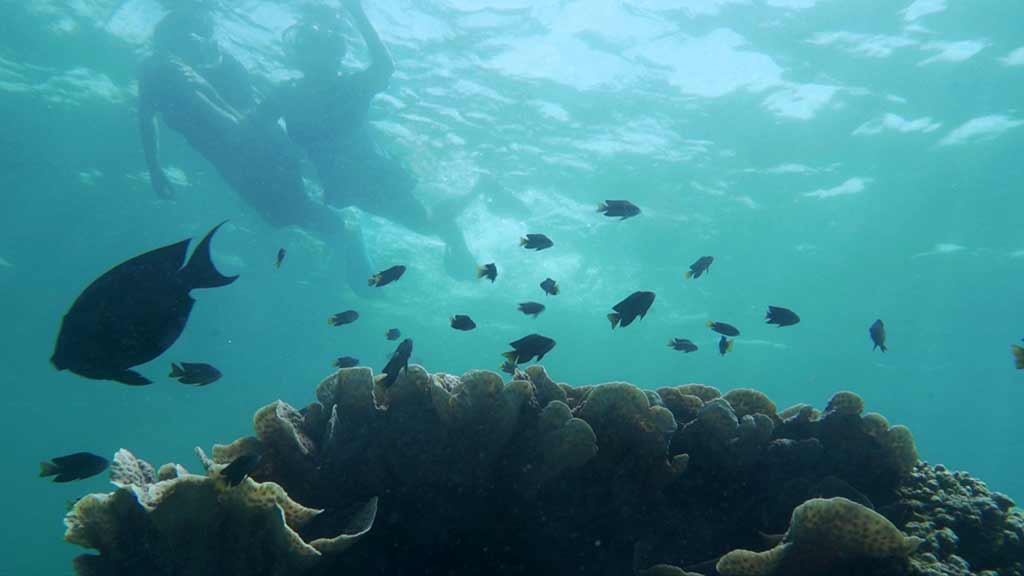
A day after the screening of the film, Priya had an unexpected call from an official regarding the sensitive footage on the Sterlite protests, but Priya, who has since travelled widely with the film (that has been certified), is quick to clarify. ‘The film was shot extensively in and around Tuticorin, and we shot exactly a week before the Sterlite protest and police firing. While shooting along Tuticorin’s coast and underwater areas near the coast, we witnessed the impact of these industries, including Sterlite. So even though this is not a film on Sterlite, we couldn’t ignore the whole event. The film is primarily Uma’s journey and keeping her voice in the forefront kept the narrative thread going. I also felt historically the place has a beautiful story. Tuticorin has always been famous for pearls, with even buildings on land made of corals, and we don’t even know it. It fascinated me how that same coast is now under threat,’ she adds.I had to admit I didn’t know either of this rich resource we had, because didn’t corals belong to the Great Barrier Reef in Australia and not to the beaches I was familiar with? But as the film very gently and powerfully reminds us, humanity and sensitivity doesn’t belong to any one geographic space, and is meant to roll in and out with the steady thrum of quiet waves.
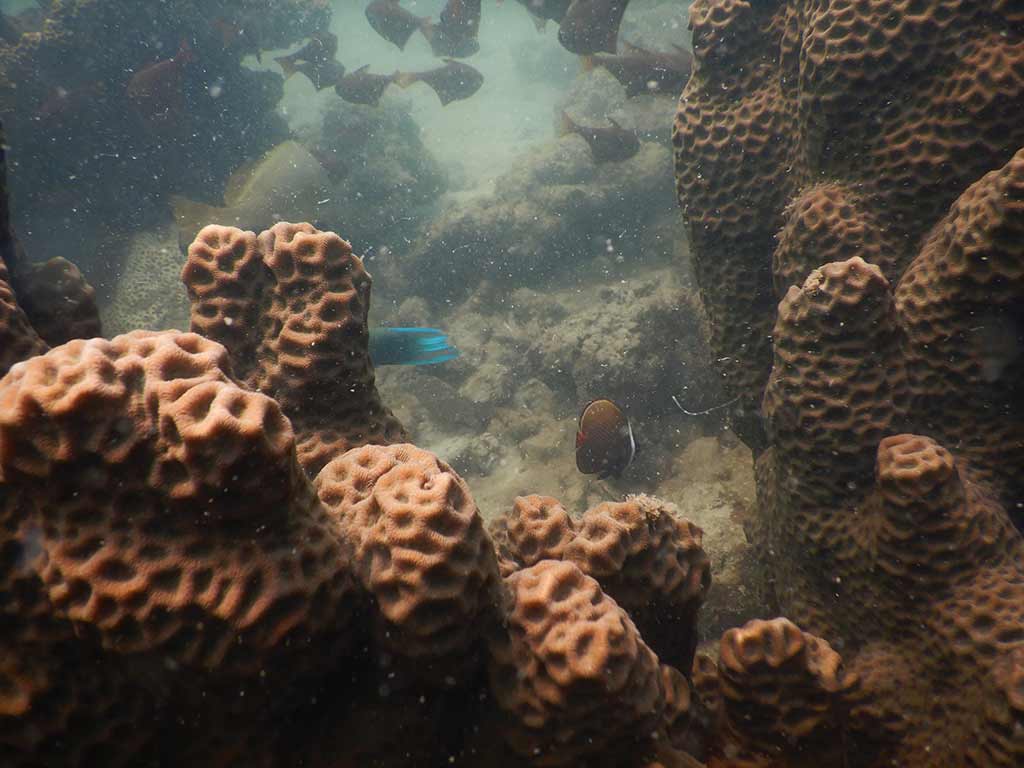
Excerpts from the interview
As a film-maker, what are you drawn to more – the ability a subject has to become a story or the story that has the ability to become a visual experience?
I think with each film, how it comes to you is very different. For instance, with my first film The Sacred Glass Bowl, which is on virginity, I happened to read an article on virginity tests which happened in Madhya Pradesh. It was part of a popular scheme in the state called ‘kanyadaan yojana’. I was quite shocked when I read about it, and I started talking to friends and relatives about virginity, and everybody in turn was shocked that I was talking about virginity. So I understood that there was a lot of unwillingness to speak about this idea of virginity and that’s how I decided to make a film on this. With Coral Woman, the journey was different; I never imagined doing a film on corals. While I was working for a television channel as part of their documentary team, it was a random call from Uma Mani that led to the film. Actually, if you look at all my films, somehow I like to do something related to women. I wish to tell their stories. Sometimes I am highly criticised that I have only women speaking in my films, but what attracts me most are their stories. In my second film, Survey Number Zero, it was about three women salt farmers from the Rann of Kutch. I feel like my films are the space where a woman’s voice can be recorded, where her experiences can be shared, and that is what attracts me the most.
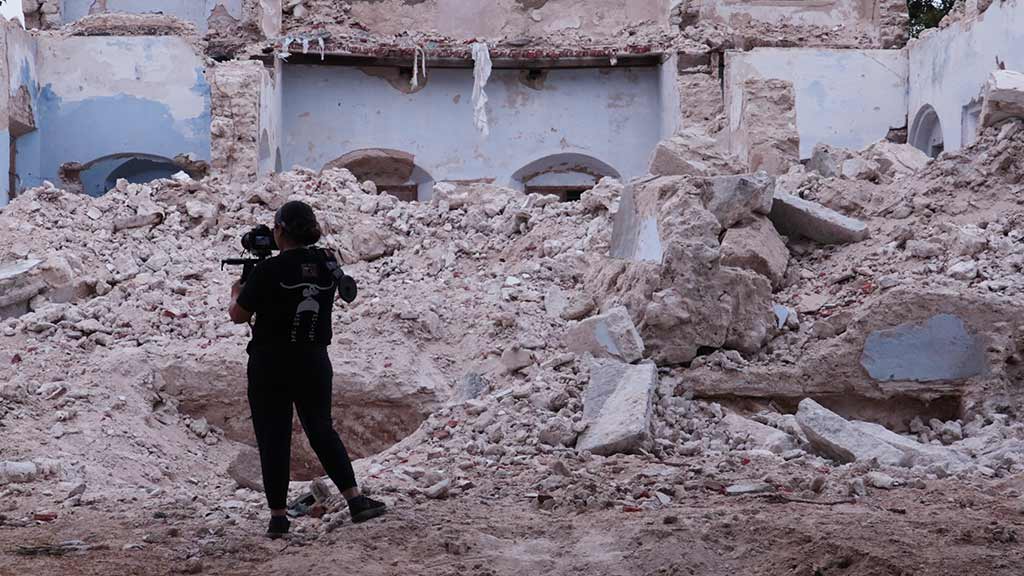
I found it intriguing that you chose to keep Uma as not only the protagonist of this documentary but also the interviewer, even although she spoke directly to you sometimes, though you were not seen. What did you hope this added layer of objectivity would bring?
When we started the film, the idea was to use two cameras, except the portions where I was staying with Uma in Kodaikanal, where it was only me with the camera. So I was always supposed to be the secondary cameraperson. But since Uma and I had a relationship, she was constantly looking towards me while talking and not to the camera. So then the team realised that I have to take on the role of cameraperson as well. So each time Uma looked or responded to me, she was looking into the camera. I felt this was interesting as a story-telling device because it allowed me to have a voice and perspective from behind the camera. I didn’t want to visually present because the main idea was to tell the story through Uma. And I worked with Uma, I prepared her, shared research material with her, and we did this before every shot. But there were pure unexpected documentary moments as well. While we were walking towards the canal in Tuticorin and met cancer victims, that’s when we also realised the seriousness of the topic.
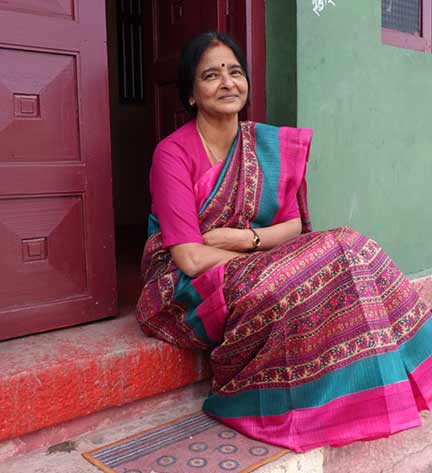
As a film-maker, how did you keep your own awe of Uma’s incredible story in check while writing the film and shooting it?
A major credit for this goes to my co-editor, Reena Mohan. She helped me balance the film between Uma and the corals. Also, the whole idea was to portray her as she is. I did not want to make her an activist, because she is not one. The beauty of the story is how simple she is. When I tell people this is a film about a scuba-diver, the instant connect is with a different class of people, with a different image to it. But here is Uma in her cotton sari and jasmine flowers. In fact, in one of the dives, she was wearing jasmine flowers, and her co-divers were telling her that you are probably the first person to dive with jasmine flowers. As much as her simplicity is the strength of the film, sometimes it was tough also for me as a film-maker, because you expect your character to express in a very dramatic way. For instance, during one of the shoots, the entire crew came back looking dejected because of the amount of dead corals they saw. But Uma was smiling and telling me about a coral that looked like a pineapple. I was confused by this contrasting reaction and then realised that this is who Uma is – she will react to that one good, alive coral. As film-makers we expect drama, that the character might cry, but she was not such a person. So I realised I have to let her be. She is concerned about corals, but doesn’t react to it like an activist or a journalist.
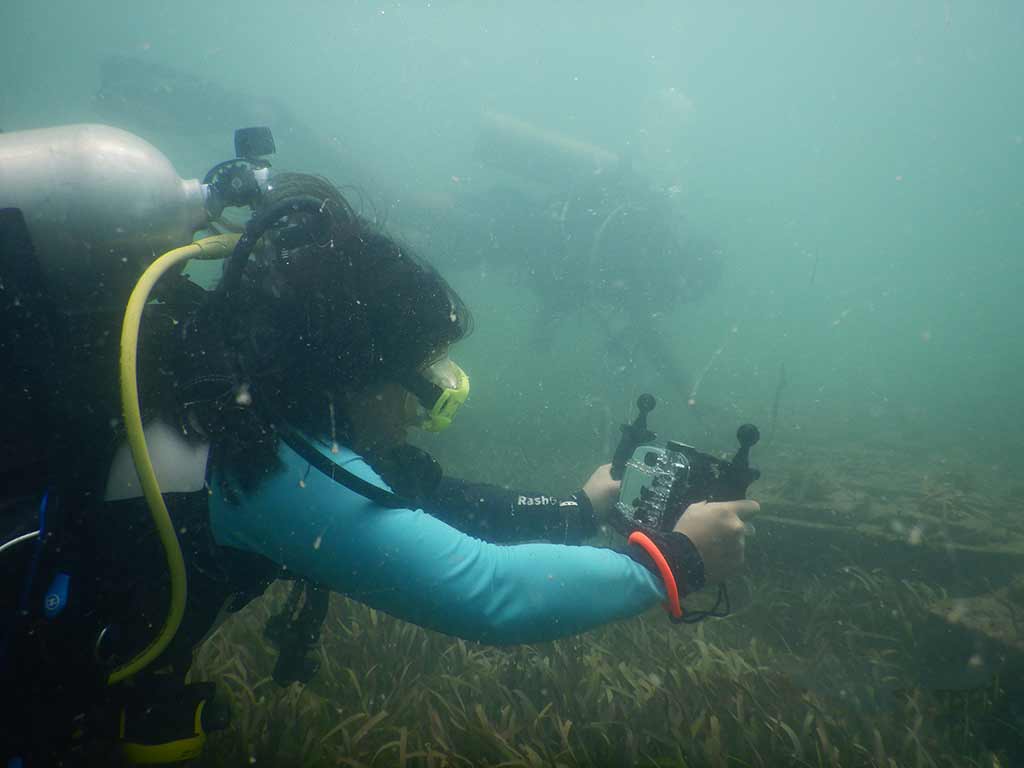
You have spoken about the challenges of underwater shooting and how unpredictable it could be. Did you anticipate this before the filming?
I think early on we discovered just how challenging this was going to be. During one of our early underwater shoots, I saw that our camera crew had many shots of beautiful corals but not a single shot of Uma. And then we discovered that there was no way to communicate underwater. And Uma is not a performer or an actor. So I knew this wouldn’t work without devising a sign language for every shot. We made a storyboard of all the shots we would need and practised it on land using signs and specific movements. Also, I had to keep in mind that Uma was a new diver with less than 20 dives, and not 100s like most professional scuba-divers. Once, after a particularly stressful dive, Uma, the cameraperson and I sat together and meditated, and I asked Uma to share her experience of the dive with words that should stimulate all my five senses. What she shared with us was so poetic and heartfelt that we ended up using it in the opening sequence. In fact, there are so many such spontaneous moments that I couldn’t put into the film! But I think my biggest challenge was balancing my personal journey with Uma. I have never been so close to any of my characters – we have shared so much, we have cried together, laughed together. I feel as a film-maker, then, it is my prerogative to keep the emotional investment in both the story and the character alive. I remember while shooting in Kutch, there was an emergency with a newborn and there was chaos because everyone thought the baby would die. I rushed the baby in my car to the hospital, and any other film-maker might have shot the entire sequence as well. But I couldn’t do it. It felt insensitive. It was the same with Uma – there were so many moments that I chose not to document. It might be viewed as a failure by a critic, this element of not being able to detach, but this is how I make my films. They – my films and the people in it – are always human.
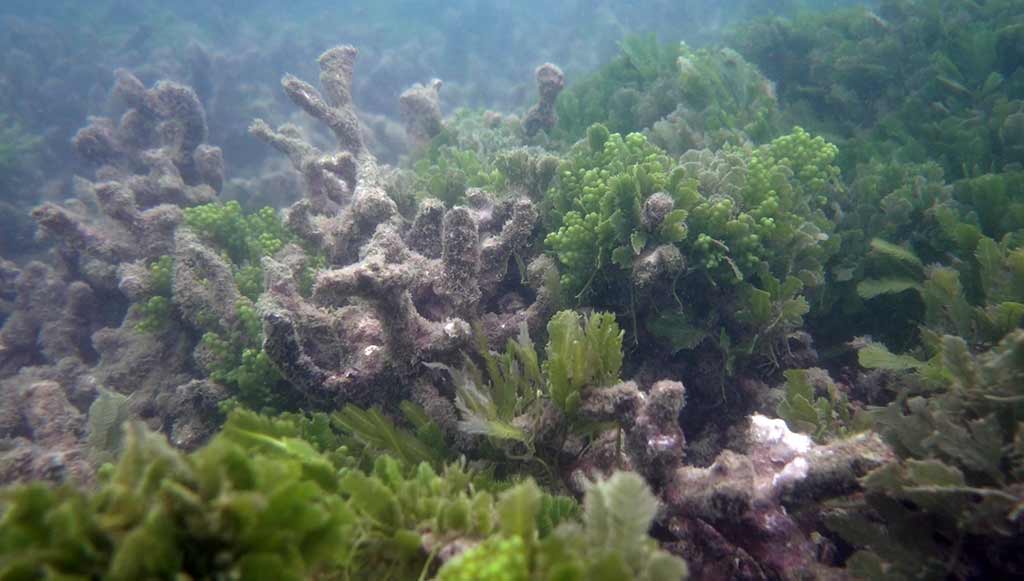
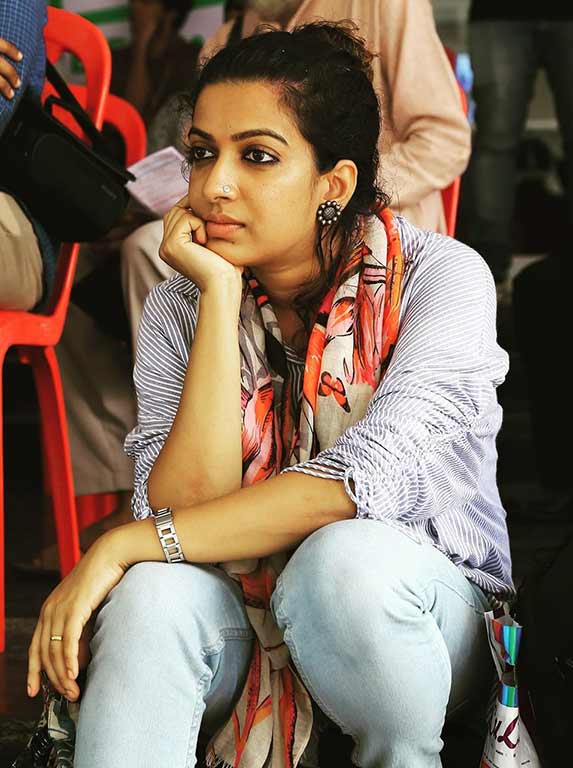
Stills from the film Coral Woman (2019). All Images Courtesy of Priya Thuvassery.
Share